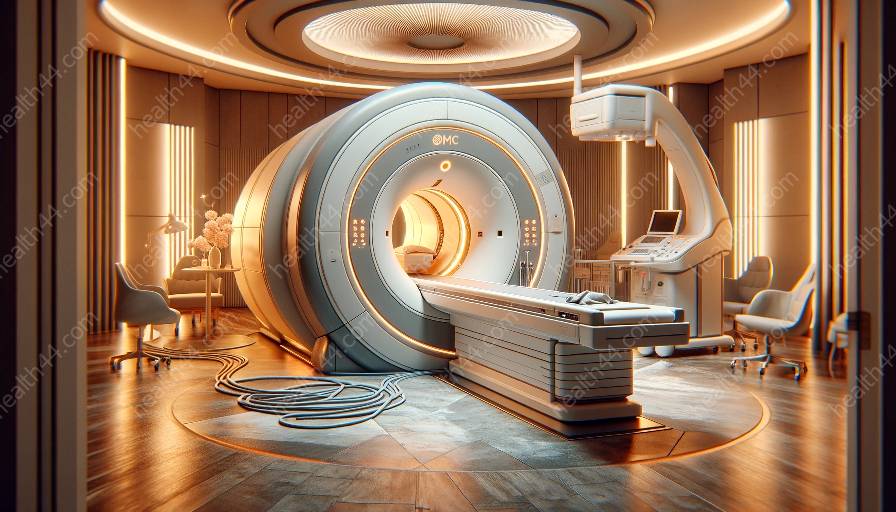Magnetic Resonance Imaging (MRI) machines are sophisticated medical devices used to capture detailed images of soft tissues and organs within the human body. While MRI technology has revolutionized the field of medical diagnostics, the images produced can sometimes be affected by artifacts, which are unwanted features that can distort or degrade the quality of the images.
Understanding Artifacts in MRI Images
Artifacts in MRI images can arise from various sources, including patient motion, equipment-related issues, and underlying physiological factors. These artifacts can manifest as distortions, signal loss, or spurious signals, making it challenging for radiologists and clinicians to interpret the images accurately.
Common Types of Artifacts
1. Motion Artifacts: These occur when the patient moves during the scan, leading to blurring or ghosting in the images.
2. Susceptibility Artifacts: Caused by magnetic field inhomogeneities due to the presence of metallic objects or air-tissue interfaces.
3. Aliasing Artifacts: Resulting from undersampling or incorrect phase encoding, leading to the appearance of false signals in the image.
Impact of Artifacts on Diagnosis
Accurate diagnosis and treatment planning rely on the clarity and fidelity of MRI images. When artifacts are present, they can obscure important anatomical details, affect quantitative measurements, and ultimately compromise the diagnostic value of the images. Therefore, mitigating artifacts is crucial for ensuring the reliability of MRI-based diagnoses.
Techniques to Reduce Artifacts
Medical professionals and technologists employ various strategies to minimize artifacts in MRI images, ensuring high image quality and diagnostic accuracy. These techniques encompass patient preparation, equipment optimization, and advanced imaging sequences.
Optimizing Patient Preparation
Patient cooperation and compliance play a pivotal role in reducing motion artifacts. Educating patients about the importance of remaining still during the scan and providing comfortable positioning aids can help mitigate motion-related distortions. Additionally, the use of sedation or breath-holding techniques can minimize involuntary movements.
Equipment-related Solutions
Regular maintenance and calibration of MRI machines are essential to minimize technical artifacts. Ensuring proper shimming of the magnetic field and optimizing gradient performance can reduce susceptibility artifacts related to magnetic field inhomogeneities. Moreover, the use of specialized radiofrequency coils and parallel imaging techniques can improve signal-to-noise ratio and reduce image distortions.
Advanced Imaging Sequences
Technological advancements in MRI have led to the development of advanced imaging sequences tailored to reduce specific types of artifacts. For instance, techniques such as phase-encoding correction, fat suppression, and susceptibility-weighted imaging are employed to address aliasing, fat-related artifacts, and susceptibility artifacts, respectively.
Role of MRI Machines and Medical Devices
MRI machines and associated medical devices contribute significantly to artifact reduction in MRI imaging. The engineering design of MRI systems, including gradient coils, radiofrequency coils, and magnetic shielding, directly influences the susceptibility to artifacts. Furthermore, the integration of sophisticated software algorithms and pulse sequences in MRI machines enables the application of artifact-reducing techniques during image acquisition.
Impact of Technological Advances
Continuous advancements in MRI technology and medical devices have facilitated the development of novel approaches to artifact reduction. For example, the implementation of motion-corrected imaging and real-time feedback systems has enhanced the ability to compensate for patient motion and improve image quality. Additionally, the integration of artificial intelligence and machine learning algorithms holds promise in automating artifact detection and correction processes.
Conclusion
Artifacts in MRI images pose challenges to accurate diagnosis and clinical decision-making. However, by understanding the sources of artifacts and implementing appropriate techniques, healthcare professionals can minimize their impact and ensure the production of high-quality MRI images. The collaboration between MRI machine manufacturers, medical device developers, and healthcare providers is instrumental in driving innovation and enhancing artifact reduction strategies, ultimately benefiting patients and advancing the field of medical imaging.


